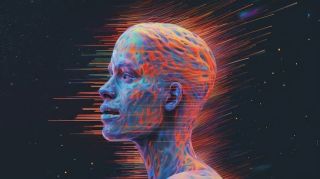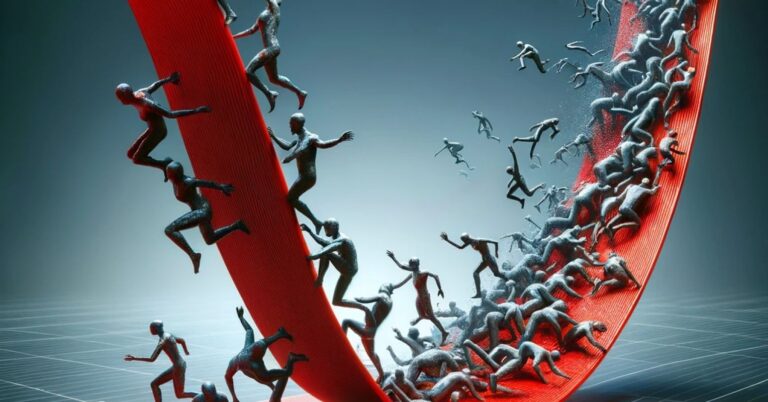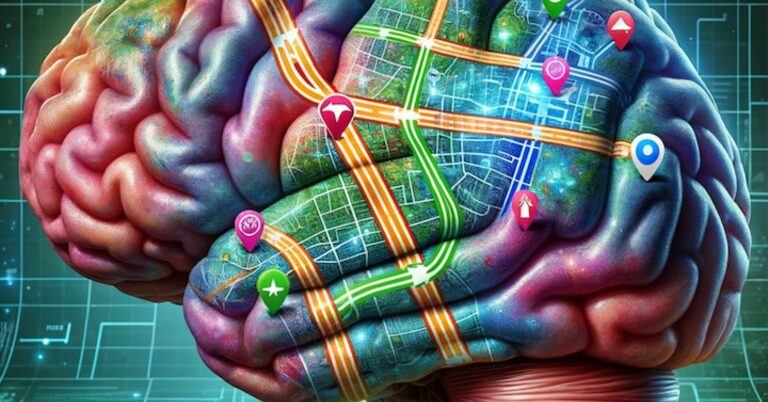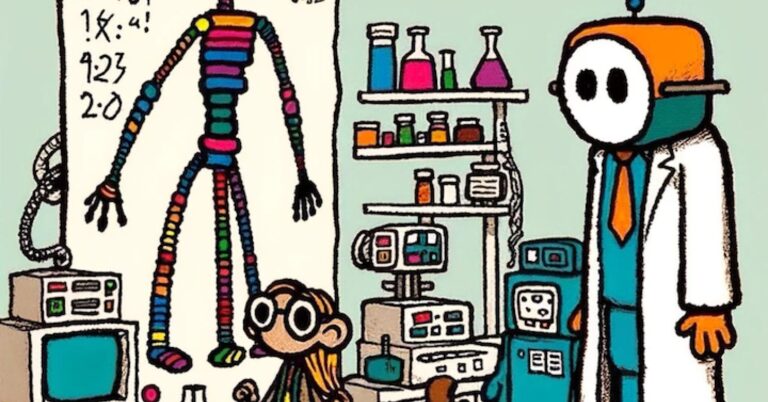
Source: Jensen Art/Pixabay
From Plato’s allegory of the cave to Immanuel Kant’s transcendental idealism, the quest to understand “reality” has been the perennial watermark of human intellectual evolution. Yet, even today, this remains a mystery that is built upon perceptual and cognitive threads.
Drawing upon Tor Nørretranders’ fascinating work, The User Illusion, we can begin to appreciate how limited our conscious perception truly is. As we barely grasp the surface of information through our senses, AI promises to deepen our understanding by augmenting not just our sensory inputs but our cognitive faculties as well. This synthesis of human and machine cognition is not just a scientific evolution but a philosophical revolution that changes the threads of perception we conjure together and call reality. Let’s pull on some of these threads and see what happens…
The Information Bottleneck: Consciousness and Computational Load
Tor Nørretranders’ insights in The User Illusion into the nature of consciousness through the lens of information processing offer a compelling layer to our understanding of human cognition in an AI-augmented world. He suggests that the human brain is an astonishingly efficient yet constrained information processor. It absorbs millions of bits of information per second through various sensory inputs—10 million bits for vision, 1 million bits for touch, and the remainder allocated to other senses like hearing and smell. Astonishingly, our conscious mind operates at a bandwidth of only about 60 bits per second. The rest is subconsciously processed, compressed, and filtered before reaching our conscious awareness. This bandwidth discrepancy between subconscious and conscious processing serves as an information bottleneck, a highly selective filter that allows only a minuscule fraction of all processed information to permeate our conscious mind. Our consciousness perception of reality is very thin, yet we often embrace this construct as definitive.
Even within the confines of our visual perception, it’s important to realize that what we see is but a narrow slice of a much larger, more complex reality. Our peripheral vision blurs the edges, limiting our focus to only a fraction of our surroundings. Likewise, the parallax effects in our eyes give us an illusion of depth, but it’s still a simplified, two-dimensional projection of a three-dimensional world. These constraints are not just physiological but also metaphorical, symbolizing the broader limitations of human cognition.
This understanding has profound implications when we consider the role of AI in augmenting human cognition. Could AI serve as an auxiliary processor that helps us better manage this informational deluge, enabling us to make more informed decisions based on a broader data set? Moreover, AI’s multimodal capabilities to analyze large and varied sets of data at speeds far exceeding human capacities could help break the bottleneck, providing us with computational tools to rapidly sift through the subconscious reservoir of information and bring more of it into our conscious experience. If effectively integrated, AI could help us overcome the limitations imposed by our biological constraints, significantly broadening our cognitive bandwidth and, consequently, enriching our subjective experience and understanding of reality.
Cognitive Fusion: The Symbiosis of AI and Human Thought
Nørretranders elucidates that consciousness is but the tip of the iceberg in human cognition. And here lies the profound potential of AI. Advanced machine learning algorithms can sift through this subconscious sea of data, potentially feeding back to our conscious mind insights that would have otherwise remained submerged. In this hypothetical perspective, it isn’t merely a matter of enhanced perception, but an augmentation and transformation of cognition. AI can serve as a Maxwell’s Demon, allowing only useful, actionable information to enter our conscious experience, while also expanding our cognitive bandwidth beyond its biological limitations. The gate becomes more selective and optimized, yet this gatekeeper itself becomes a new and concerning demon in and of itself.
Can AI Be a Catalyst for Techno-Human Evolution?
Our techno-philosophical transformation through AI corresponds to an evolution in both our external environment and our internal cognitive ecology. Here, AI serves as both the telescope that brings distant galaxies into focus and the microscope that unveils the subatomic world. It’s a tool for both external exploration and inner revelation. AI might accelerate our collective journey toward a future state of higher complexity and consciousness. It could serve as the agent that harmonizes the disparate elements of reality into a coherent, comprehensible whole, effectively expanding the “conscious bandwidth” that Nørretranders so insightfully outlined.
Confluence and Convergence: The Future of Reality
The future, then, is not just about AI and humans operating in parallel but in an intimate confluence where each enriches the other in a continuously evolving feedback loop. This implies a future where the line between subject and object, between perceiver and perceived, could blur. Through this melding of machine learning and human cognition, we have the opportunity to not merely discover but also to co-create a new tapestry of reality—a multidimensional, highly nuanced, and profoundly interconnected cosmos of understanding.
The Human-Centric Synthesis: AI as the Catalyst for Optimized Human Evolution
Rather than ceding ground to a transhuman reality in which human traits are superseded by artificial elements, what emerges from the convergence of AI and human cognition is an optimized, human-centric paradigm. In this synergistic model, AI doesn’t eclipse human intellect but amplifies and refines it, serving as a sophisticated tool that enhances our unique cognitive abilities. This isn’t a surrendering of what makes us human but, rather, an elevation of it. AI acts as a force multiplier, enabling humans to sift through complex data sets, recognize patterns, and make nuanced decisions at an accelerated pace. As such, it becomes an extension of our innate capabilities, not a replacement. This perspective holds the promise of ushering in a new era where human evolution is catalyzed by technology, yet remains fundamentally rooted in enhancing human potential and experience.




















+ There are no comments
Add yours